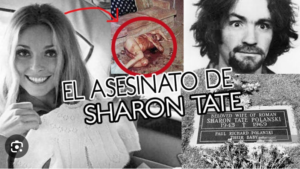by I.N.

Hello Mr César. First of all, allow me to express my deep gratitude for feeling that my comment from exactly a year ago deeply resonates with you. It is an honour.
Forgive me for my year-long absence. I had matters to attend to. I saw your latest post as a personal challenge.
I hope this comment grants me access to your select group of SS-like Seers (that side with your diagnosis which attributes Aryan deracination primarily to Christian ethics, a realization yielded by ample proof and recurring historical incidents largely ignored and frowned upon by most racialist circles who stubbornly choose to remain unaware of the underlying problem that renders Whites vulnerable to infiltration and subversion) and zealots devoted to the manifestation of our pure and unquenchable desire to watch or at least contribute to the eventual absolute and uncontested domination of the Aryan superman over the entirety of this globe with the conquest of the farthest outreaches of the universe being our ulterior aim, perfectly summarized in your 4 & 14 words maxims that match the inherent will of the Cosmos to create a Species that reflects the incessant 14 billion year process of cultivating a refined life form able to withstand successfully the Void that awaits everything post-mortem (does it remind you of Savitri Devi’s ‘Men Against Time’ analogy?) and give meaning to this volatile and inexplicably occurring activity called existence.
If the Aryan descendants millions of years into the future (or even less if we take into account exponential growth) cross a certain ontological threshold aided and streamlined by sensible use of advanced technology (a prerequisite for such an endeavour) which emphasizes and focuses first and foremost on their eugenic perfection, there might come a point where the achievement of virtual immortality by delving into the fabric of the quantum nexus and bending it at will becomes a reality.
I have long been anticipating the right moment to share this because the situation regarding the commenters that abuse your unwarranted patience and prove that the investment of your precious time in trying to preach the truth and enlighten them has become intolerable.
With all due respect, I am inclined to suggest a compromise.
Set some golden inviolable rules whose disregard means unforgivable sacrilege and instant irreversible ban and have a link that redirects to this post appear on the sidebar.
Commenters will be forbidden from ignoring the following statements among others which you might want to add yourself. Just off the top of my head: Anyone who uses proxy IPs shall be banned without warning unless they are commenters like Mauricio who have repeatedly proved their gravitas. Remember that Virtual Private Networks will be a necessity once we start operating in the Dark Web to keep government agencies looking to undermine our struggle off our backs.
- No belittlement of The 4 Words [Let’s ‘eliminate all unnecessary suffering’].
Eliminating unnecessary suffering is the other core tenet of your seemingly dual but deeply complex and multifaceted ideology that derives from your decades-spanning study of psychohistory and can be applied to the observation of both the animal kingdom and the human condition, and the need to correct and reengineer them and breed a higher type of man capable of presiding over this reconstructed and revitalized ecosystem with wisdom and consideration for the pain inflicted to all sentient organisms and act in synergy with Mother Nature to harmoniously govern and direct the arrow of evolution down a sustainable path. A noble attempt brought about by this well-intentioned intervention to protect the integrity of all species worthy of being preserved and to minimize needless pain as much as possible.
In this indifferent and cruel Universe where no regulator yet exists to mend the astronomical pain that occurs daily, it is up to us to take the Initiative and assume the role of establishing a natural order that exacts justice by weeding out the offenders—bipedals mostly, and others alike. Hermann Goering sent to concentration camps the arrogant fools that opposed the decree that banned vivisection. Let that sink in the minds of Neanderthals that ignore our pleas to stop the torture of innocent animals.
- Thinking that a worldwide technocratic dystopia is plausible is grounds for elimination due to imminent energy devolution.
Anyone who thinks the system will keep running after the societal and financial collapse that will sweep the West due to the long-overdue dollar crash whose effects we are currently witnessing is increased in intensity and which will have an incorrigible impact on the global economy is an idiot. Having the illusion that the traitorous elites and uniformed personnel are going to impose a universal totalitarian dictatorship enhanced by AI-controlled strict surveillance where in exchange for basic freedoms you get universal basic income and free virtual reality video-gaming escapism is alarmingly dumb. People like this are either idiots or actually prefer such a depraved sci-fi scenario to take place. Even if that is their plan they are deluded and have miscalculated.
A future in which energy consumption from a constantly growing and mentally passive and incompetent population of shitskins (that can barely function in their day to day lives without big state welfare at our expense or grasp rudimentary concepts, much less work) exceedingly supersedes the rate, the percentage and the quantity of the extraction, distribution, availability and affordability of rapidly depleting natural resources, is unsustainable and falls into the realm of childish science-fiction as in reality it will result in severe scarcity of basic commodities initially, oil shortages and mass starvation later on. An ideal playground for the racially conscious, weapon wielding American whites to decimate all opposition and expand their sphere of influence to Europe as they free up and inhabit living space south of the Rio Grande at the same time.
The perfect state of things to demolish this vain world and indiscriminately extinguish both internal and external enemies.
Apollokult had made this mistake last December. Commenters ought to pay attention to the arguments you have presented again and again like Mike Maloney’s and Chris Martenson’s videos that refute and deconstruct a digitalized, mechanized-cybernetically embellished, densely populated, suffocation inducing urbanized and industrialized-environment dystopia.
- No supernatural nonsense that has no bearing on reality like afterlife and reincarnation. Period.
It is a waste of valuable time. Not only because it is an insult to logic and goes against the immutable law of nature and the universe—namely, that everything whether organic matter / sentient beings or inanimate matter eventually perishes at some point and is subject to erosion / decay or as physicists call it, the second law of thermodynamics / heat death / entropy and what awaits after the cessation of consciousness is nothing but the endless void of non-existence—a but mainly because it demotivates the Aryans, makes them fatalist, prevents them from seeking to improve their condition thus making them defy the workings of nature that all beings must obey and deprives them from attaining a genuine spirituality as you have posited many times or attempting to transcend their lacklustre ego and in the eloquent and accurate words of Pierce reach an elevated consciousness.
Indo-European deities should be thought of by us as nothing more than symbolic interpretations of natural phenomena and Aryan racial archetypes whose myths contain wise allegories and metaphors representative of the heroic ‘Hyperborean’ spirit.
Unfortunately, both the intellectuals and the masses of Aryans in antiquity indulged in blind faith and superstition but we must cut them some slack for the time they lived in.
- No posting of comments whose subjects are completely unrelated to racialism aside from picking apart the narrative that argues that genetic causes of mental illness are legitimate or take precedence over psychogenic factors when the exact opposite is true according to your personal experience and your thorough research into this most disheartening and shunned subject.
However, would you say the same for hybrids who have a multitude of incompatible racial components clashing within their psyche? Wouldn’t that make them more susceptible to mental issues and breakdowns? Of course, we don’t focus on mongrels but otherwise healthy pure-blooded Aryans so any discourse about other populations is irrelevant. Excuse me for diverging from context a bit. I just think it needs some clarification.
______ 卐 ______
Note of the Editor: A first approach to this question could start with my book Day of Wrath. Of all medical specialities, psychiatry is the only one that lacks biological markers.
Psychiatry is an extra-legal system of penalties for those who haven’t broken the law (remember that they wanted to commit Commander Rockwell). A single example will suffice to illustrate that the same happens with non-Aryans.
José Barba Martín, who once came to my house and knows Latin and ancient Greek (I’ve heard him talking in Latin), was one of Marcial Maciel’s victims of sexual abuse. He told me a psychiatric horror story.
On one occasion he witnessed how a young Mexican victim, during an event where Maciel was honoured by Catholic fans, made a public sarcastic comment exposing Maciel. He was immediately committed to a psychiatric ward and Barba didn’t hear from him again.
People don’t seem to realize it but that is what psychiatrists do: the dirty work to destroy a dissident who hasn’t broken the law, under the pretext of ‘mental illness’ (an entity that is not even defined in psychiatry). I have a blog in Spanish on the subject and I could send you the link if you are interested in using an internet translator to elucidate the matter a little further.
______ 卐 ______
If said comments betray an ‘adherence’ to conspiracy theory hysteria on behalf of the commenters, then they must be ousted.
Retards shouting that fluoride in toothpaste and the water supply and chemtrails are making us dumber; those who believe the new 5-G telecommunication technology is being implemented to fry their nerve cells (as if they aren’t fried already) or to cause terminal cancer cases to flare up; those who think Lee Harvey Oswald did not act of his own accord but was hired by the Deep State to assassinate JFK (leaving the courtroom is endemic to conspiracy theorists), that 9/11 was an inside job; that the moon landing was fake and filmed in a studio; those who believe aliens are abducting people daily and transforming into humans, and last but not least those that claim they have evidence that the Illuminati and other secret societies are performing Satanic, blood-sucking, child-raping and mutilating rituals are nuts and they have no right to pollute your profound website with their incurable stupidity.
Incidentally, they are Christians most of the time. What a surprise.
- The Nordic ideal is the peak, the backbone and the cornerstone of our self-evident belief.
Non-Nordic so-called ‘whites’ must accept that they are nothing more than stepping stones for Nordids and failed test subjects in this most intricate experiment called Life that evolution has chosen to discard in favour of a more advanced, vigorous, intelligent, beautiful and superior specimen and should sacrifice their Ego at the sacred altar of the preservation of Nordic blood, and preferably refrain from procreating to safeguard the future of Aryan posterity and living out the rest of their days within a white republic / living space and thus gain admiration for their self-denial and the privilege of living among true whites so long as they are determined to fight the racial enemy.
And who knows? They might be lucky enough to witness the dawn of a new earth-spanning Aryan civilisation. In any case, only if deemed beneficial and after thorough estimation of potential outcomes should Aryans form a temporary alliance with them. I call ‘lesser or pseudo-whites’ the swarthy Meds (whose origin is ultimately Middle Eastern or North African), the pudgy and broad-faced Baltids and Alpinids (whose origin is suspected to be Mongoloid / Central Asian), the ill-tempered Dinarids and other mixed West Caucasids. Sorry for using the Old Racial Classification: it’s just that most aren’t very familiar with Evropa Soberana’s new racial terminology.
In other words, this strategy should be employed to deal with most of the inhabitants of Southern and Eastern Europe. These phenotypes should not be classified as White by us racial ‘extremists’ (but realists) because they either have alien blood desecrating their veins or they have become obsolete.
Certainly, the ideal solution would be to have them get devoured by the exponentially growing coloured tidal wave of simians. Physiognomic testing should be conducted SS-style to ascertain who is White and the fields of genetic engineering and anthropology must be merged into one science to establish a new scientific branch that would allow us to venture into researching human DNA with more accuracy and elaborate sophistication. A vision that could have been materialized had the Reich emerged victoriously.
It is obvious who is White though. The White Man is the healthy virile blond beast that will rape the Sabine women and take up arms to butcher the degenerate ruling class that has him downtrodden and floods his ancestral lands with anthropomorphic scum. The precursor to the arrival of the Ubermensch. Has anyone else ever visualized this?
The pinnacle of evolution is a tall and lean Nordic male. His counterpart is his trophy, his jewel, the crown of evolution: a lovely Nordic female. They are both naked, sporting blazing, radiant golden hair akin to the rays of the sun. Deep piercing blue eyes more transparent and vibrant than both the sky and the ocean.
Fair skin of identical complexion purer than snow. Her thighs are resting gently on his shoulders and they hold hands. His hands face upwards and softly cover her palms. He is the column on which she stands, flourishes and thanks to whom she projects her enchanting looks which resoundingly assert her unwavering superiority. In the background behind them lies a majestic bucolic landscape enriched by a waterfall that glows in the colours of the rainbow as both the water and the two lovers posing for the canvas are bathed in the warm sunlight. All this In the style of Maxfield Parrish’s godly paintings. A sight to behold. An artistic feast for the eyes that would make Zeus, Apollo and Poseidon themselves jealous.
The Eternal Feminine is the only real mystical force of Nature that can appease and satiate the ruthless Nordic warrior.
The Umwertung aller Werte requires a significant amount of time to be embraced and to detoxify the Aryan psyche from the deleterious effects of the sickening desert cult and all the offshoots that have sprung from it in this two millennia of misery and decadence that have befallen us (with occasional sparkles of hope).
I believe that whites are by nature prone to complacency, greed and avarice only after having encountered and coexisted with the alien infantile races. We have to rectify that. The Indo-European invasions have been taking place since the middle of the Neolithic, covering most of the surface of the Eurasian landmass and have always ended in disaster due to miscegenation. It is an innate handicap leveraged by our competitors that start to become audacious and clamour for equality to give even the slightest advantage to the inferior races. Otherwise, the Aryans would have conquered and cleansed the planet by the end of the Iron Age.
This deluded compassion needs to be purged no matter what. Only after being liberated from the obsessive compulsion to feed, clothe, shelter, educate, integrate and generally emancipate parasites and ghastly monstrous bipedal abominations will they be free.
- No sympathising with Marxist, socialist, communist and anarchist rebels, reactionaries and revolutionaries or governments that are in effect still or have been dissolved like the U.S.S.R.
The Left is a sworn enemy along with the oblivious conservatives, and Adunaii was a repeated perpetrator as he endorses this race treason insanity.
- No promoting or apologizing to promiscuity or homosexuality.
We have paid the price for not standing up to this. Erotic passion should be confined between two individuals (unless in times of crises and wars, when polygamy is necessary to ensure that enough females are fertilized; otherwise the institution of marriage is a solid foundation) of the opposite sex whose primary concern should be to settle down and raise healthy children, nurturing them with the values, ideals and principles corresponding to our worldview which is in turn imposed by none other than the insurmountable Natural Laws. As for homosexuality, Himmler aptly addressed this matter in his speech dissecting this pathology and linking it with the chastity of the Catholic clergy.
Pederasty in Ancient Greece and Rome is another matter and we should extrapolate to today nothing more other than the acknowledgement, admiration and praise of male Aryan beauty when at its prime. Seeing a beautiful androgynous Aryan boy doesn’t mean that he arouses my sexual impulses and that I am inclined to sodomize him. More like, I am jealous of the unequivocal near feminine natural charm this male creature oozes with and with zero hindrance exclusively in this fleeting timespan as he transitions into adulthood.
- No to showing indifference about the severe problem of foreign cultural influences permeating our lives like listening to corrosive music genres, or trying to find profundity and qualitative themes supposedly beneficial to our cause in Hollywood excrement like Fight Club.
In short: Normies aren’t allowed. We must instil in our youth artistic idols of our glorious past worthy of praising and aspiring to imitate and teach them the appreciation of classical art and music and forge new customs that highlight the significance of the sublime aesthetics that our ancestors cherished and worshipped thanks to which our race once reached heights of mind-boggling magnitude.
We have to limit the exposure of our vulnerable youth to profane, insulting and degrading Negroid, Jewish and North Eastern Mongoloid ‘art’ as failing to tackle this results in beautiful Nordic ephebes listening to rap / trap / pop / rock / metal (i.e., mental and spiritual poison) and speaking in African vernacular and Aryan nymphs becoming fascinated or even infatuated with disgusting dark coloured males en masse. Ditch the false notion that degenerate art is innocuous.
- No mercy and showing respect to the ‘right to a living space for all peoples’, as Varg Vikernes does.
This includes: expressing support and solidarity to freedom fighting third world locals (most often terrorist organizations and affiliated sub-branches that have claimed white lives in the past apart from the obviously CIA and Deep State-funded ISIS & Al Qaeda) like Hamas and Hezbollah and military dictatorships like Iran and North Korea that ‘bravely’ resist the ZOG and ‘stand up to American Imperialism’—another transgression that Adunaii can be accused of. We don’t care about the predicament inflicted upon biological waste, that the weaponry of the US or NATO is mowing down ‘innocent and unarmed civilians’ in bombing raids. We care that it happens at the behest of Israel and it exasperates us as many times it costs white lives and sucks dry the white American and European taxpayer.
Sooner or later, all other hominid subspecies, even those that have common enemies with us or have forged uneasy alliances with whites in the past like Palestinians, Syrians, Iranians and Japanese respectively, are to be sacrificed at the altar of the doctrine of utter exterminationism like you espouse Mr César. Not expulsion / racial segregation. It is obvious that William Pierce preferred the former. You either hate or you die. Sparing populations that pose a threat long-term is moronic and simply delays the inevitable conflict.
- No monocausalism.
The ugly desert rodents aren’t invincible despite having monopolies on many industries, owning a multitude of multinational corporations and exercising power over the State. Whites are at fault for letting them infiltrate the judicial system and pass anti-white legislation, for censoring white advocates and for the brutal suppression of white dissidents who additionally are being slandered and reprimanded on the media for standing up for their racial preservation.
Aryans have been responsible for their decline for the entirety of their history as they never could take sufficient measures to preserve their precious fragile blood and keep it intact and secure from the infection of primitive primate life forms. Every Aryan civilisation that flourished crumbled throughout hundreds or thousands of years because they failed to address the same recurring challenge. They prioritized financial gain owing to slave labour over racial prosperity and cohesion.
If it happens again, it will be the last time. It is victory or obliteration. We must stop putting personal ambition above collective racial benefit.
Anglo-Saxons in particular are guilty of this crime. They condemned themselves to this Hell and have irrevocably damaged our resolve to fight the inhuman hordes. Murdering the Third Reich will spell their doom unless they act quickly, decisively and coordinate their retaliation.
- No defence of Christianity.
I need not say anything else on the matter. Abiding by the Gospel of the crucified kike who never existed and whose worship was spearheaded by our foremost enemy and still plagues us, equates with ‘capital punishment’ for the offender.
Their churches will be demolished like they did to our temples and statues and the clergy will meet a much more horrible end than the one the Christians of the Middle Ages delivered to our priests. If the Chosenites ever rebuild their Temple we must destroy it and atop its ruins erect statues of these renowned anti-Semites: Antiochus Epiphanes, Nero, Vespasian, Titus and of course of The Fuhrer whose statue must surpass the rest in size and splendour.
- No uncalled-for criticism of the Fuhrer except when discussing strategic approaches he implemented throughout the War and suggesting alternatives that might have changed the course of History.
If anyone unabashedly mocks the Last Great White Man and his Movement, he is a reprehensible traitor.
Whites should honour and pay tribute to their heroes and forefathers (except for the Christians of the Middle Ages, the ‘Greatest Generation’—the worst—and the boomers) and strive to surpass them. Especially their would-be saviour whose words and actions reverberate to today and inspire us for greater deeds. Adolf Hitler was right and if the West refuses to accept this fact it will sooner or later be annihilated.
- Before anyone wishes to comment on this site, they must at least skim through the most important essays you have pleaded they pay attention to like The Fair Race’s Darkest Hour, William Pierce’s Who We Are and Hellstorm: The Death of Nazi Germany among others, or read the selected excerpts you have in your sticky post.
What do you make of my remarks Mr César? Do they align with your directives?
I wish you a Happy New Year. May this decade mark a milestone in the acceleration of the gradual paradigm shift from the disastrous Happy Mode Whites have been entangled in for so long to Angry Berserker Combat Mode.





